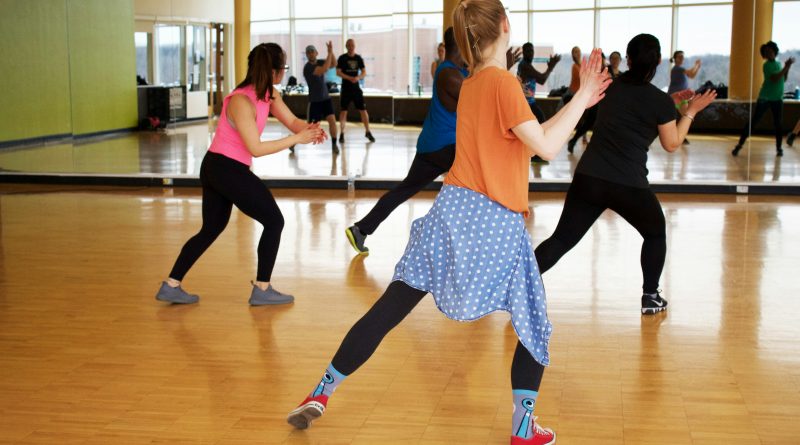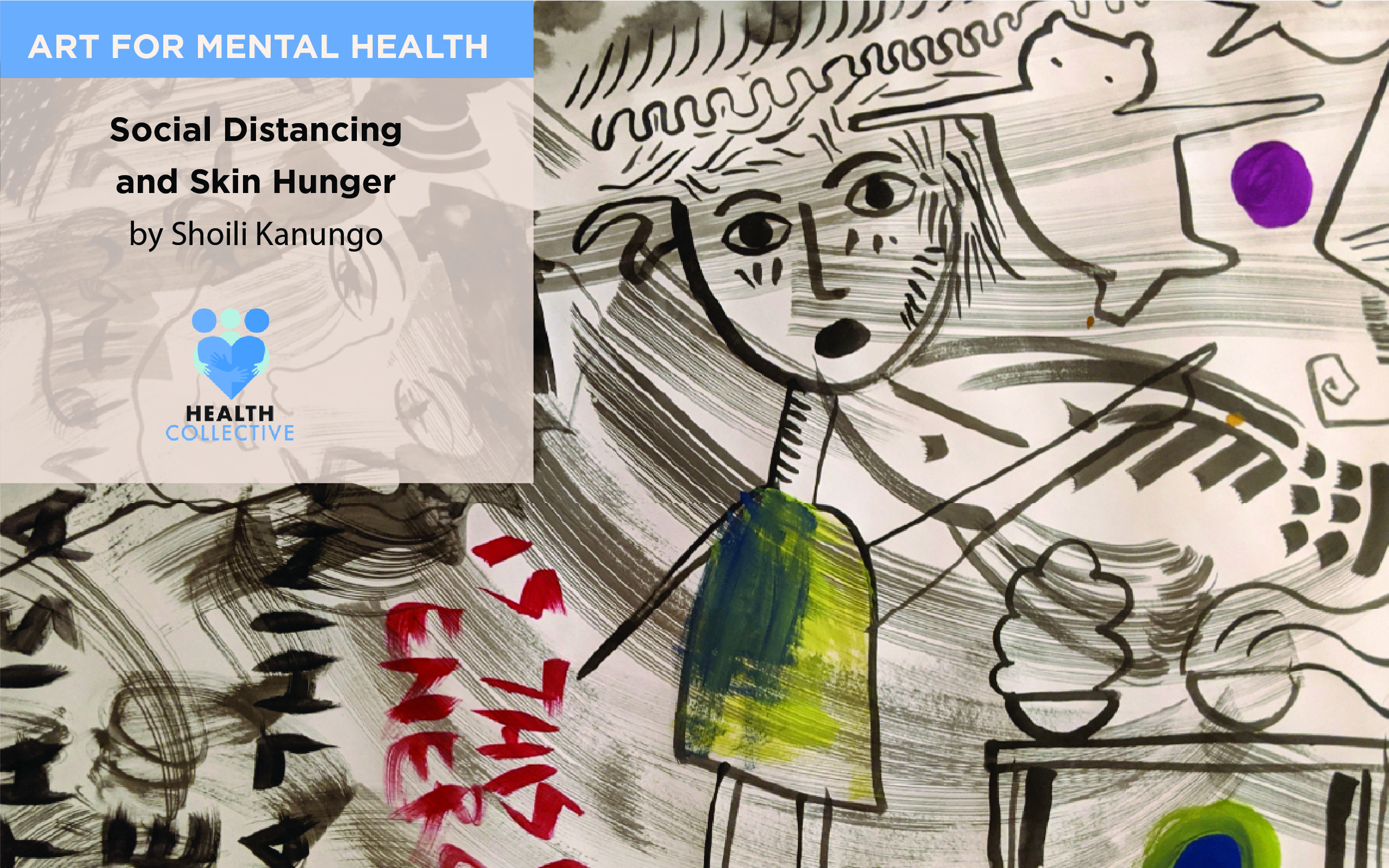Lighten the Load: How the Joy and Rhythm of Dance Helps me Combat Depression
By Sumana Bhoothalingam
It has been said many times, many ways: dance your problems away, comfort yourself as you would a child, be your own best friend. But, what do any of these really mean when you are feeling low, heavy and empty inside? Can they actually provide solace and be useful pearls of wisdom, or are they just one of the many platitudes we throw around? I have spent years looking for meaningful ways to be at peace with my mild but troublesome tendency toward depression, to be able to summon up that light at the end of the tunnel.
After exploring various combinations and permutations – of mindfulness and wellness, of philosophy and psychology, of mindset and pure grit, it was finally H and her dance classes that brought a scintilla of shining hope, the beginnings of a language of self-comfort, a simple message that even when we are sad, joy is not far away, it is around the corner, and it can be ours. All I have to do is shift the focus away from my mind and toward my body. As it turns out, mindfulness – though powerful for many – is not something that works for me. Rather, it is re-wiring the mind through rhythm that does.
A Large Circle
It all began a year ago when I walked into a room, and instantly wanted to leave, thinking I was in the wrong place. A group of middle-aged women were standing in a large circle, laughing, and kicking around a football. What was going on? Was this the Zumba/ Latin/ African/ hip-hop dance class that I had signed up for, in a desperate attempt (yet again!) to lose unwanted pounds and get a semblance of fitness back into my life?
The women seemed to be having a wonderful time, and they called out for me to join them. I had stumbled upon a truly diverse group in this little Swiss town; as they introduced themselves they spoke fondly of childhoods in South-Africa and Sri Lanka, Belgium and Bangladesh. The football was still being kicked around, akin to both a physical and social warm-up game. You could feel the women begin to unwind; some took a layer off in preparation for the workout ahead, others stuck to cultural norms and kept coverings on. Regardless, there was a universal feeling of ease building in the room, like a collective exhale.
And then the dancing began. I did not immediately feel the joy.

Waiting to Exhale
On this particular morning, I happened to be feeling heavier than usual, worried that I might not easily be able to shake off the feeling of unease that enveloped me. It was partly due to the time of the month and those pesky hormones, but it was also a nagging feeling, as I entered the year I was to turn fifty, that I still had a long way to go before I truly felt good in my own skin. This was both in terms of physical fitness –- I was heavier than I had ever been –- and what I saw as accomplishments and achievements. The latter was a tricky one: I was the one who had given up working to be a full-time mother, while my husband took on the equally practical role of breadwinner at a job that involved long hours, travel, and moving countries every few years. Neither of us could do both, and in all honesty, our setup works for us –- he enjoys the work he does despite the attendant stress, and I enjoy the flexibility of fitting my studies, household tasks and childcare into my day as I wish –- without needing to report to a workplace –- despite the ’stigma’ still attached to being a ‘homemaker.’ All this said, I was still waking up most mornings, feeling there was something amiss, sighing and idly wondering about the meaning of it all. Big thoughts –- ones that our sages and Greek Stoics spent a lifetime pondering … and here I was trying to resolve it over a cup of morning coffee just before my school-going kids descended on me!
The Magic of Movement
There is no other way to put it: as the class proceeded, the dancing started working its magic. Moving to the music, following the steps which talented dance teacher H had choreographed in a way that made it seem but natural to move in this direction and then that, I felt like a baby being gently rocked. I had read somewhere that being soothed and comforted by rhythmic movements is as important for adults as for babies. It could not have felt more true in the moment. The joy of feeling the music course through me, and letting my body move to it, helped ease knots in my stomach, neck, throughout my being as it were. It was both massage and catharsis, relaxing and invigorating all at once.
I have been a consistent member of H’s dance community ever since that day, increasingly joyful as I memorised choreographies and danced without needing to follow the teacher’s lead, but also unflustered when I did not know the steps, and unaffected by how I looked in the mirror. None of us cared about appearances; rather there was a collective sense of fascination in how our bodies were moving, and what it was doing to us – body and mind. Our teacher, H, told us that we were in fact ‘rewiring’ our brains when we tried new steps, and failed, and tried again. When I complained that after completing a step with one foot, my brain could not conceive of lifting that very same foot to start the next step, H smiled. She knew I had done classical Indian dance as a child. She reminded me that my brain was recalling that learned logic, “Finish with the left foot, start a new step with the right.”
But now I had to push my brain to think the opposite way. “The harder and more unnatural it feels, the better it is for your brain,” she said, in her trademark direct, no-nonsense style.
H knew all about things being hard when it came to dancing. When she was growing up, it was not the learning how to dance – moving with grace and ease seemed to be an innate skill – but rather being allowed to do so. Her parents let her brothers spend hours playing football, and encouraged them when they started playing competitively; however there was no similar support for H’s dance classes. They saw dance as frivolous at best, immoral at worst, and told her to stop the classes. After H broke the rules a couple of times, they banned them once and for all. But H could neither completely stay away, nor be entirely deceitful. She told us how she would inform her parents she was playing football with her brothers, join them for a bit, then slip away to dance. She did feel guilty and sad and confused about doing this, but then reminded herself that dancing evoked joy, and hurt nobody, so it could not possibly be wrong.
Evoking and Holding to the Joy
H’s story touched me to the core. Years later, here she was, bringing joy to so many of us – women at various stages of life, with different motivations for coming to her classes, but uniformly experiencing the many physical and mental benefits of dance. I continue to feel so much gratitude to be part of this unique community; a place where we can shed layers of all kinds, a place where we can feel uninhibited pleasure. It is inarguably a cardio workout too, don’t get me wrong, but there is a lightness and giddiness that we all feel afterwards … and it’s not just related to (wishful?) thinking about how we are losing our bellies!
It is more about experiencing and then holding onto this little paragraph (of joy) in the midst of the ongoing essay of our day, our week, our month, the business of life. It helps to recall, whether in the throes of a traffic jam or tedious to-do list, just how our bodies and minds feel when we dance… when let the body remember the magic and the brain its re-wiring. And to let these recollections soothe us in the present moment. If none of this sounds in the least bit logical, that’s okay. I don’t claim to be a neuroscientist. I don’t have a million studies to back up my ‘research.’ I am simply putting out this message: when you’re feeling heavy, lighten the load. Shake that body. Get onto the dance floor anywhere. I promise that in those moments, in your own very special brain, you’ll forget about how you’ve hit rock bottom. Suddenly, you’ll be transformed into a rockstar.
Views expressed are personal and not prescriptive. The author is a former broadcast journalist who is not on social media, but welcomes your comments. You can email team@healthcollective[dot]in or tweet @healthcollectif to share your thoughts and we’ll pass them on.
Feature image: Photo by Danielle Cerullo on Unsplash
Also Read: By the Same Author




